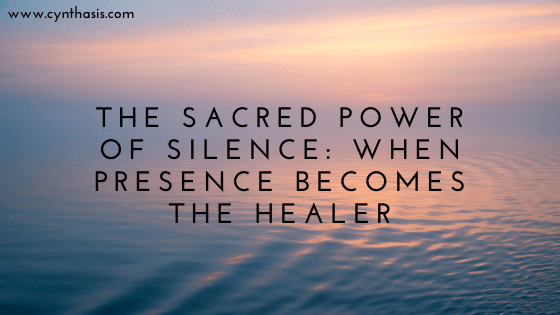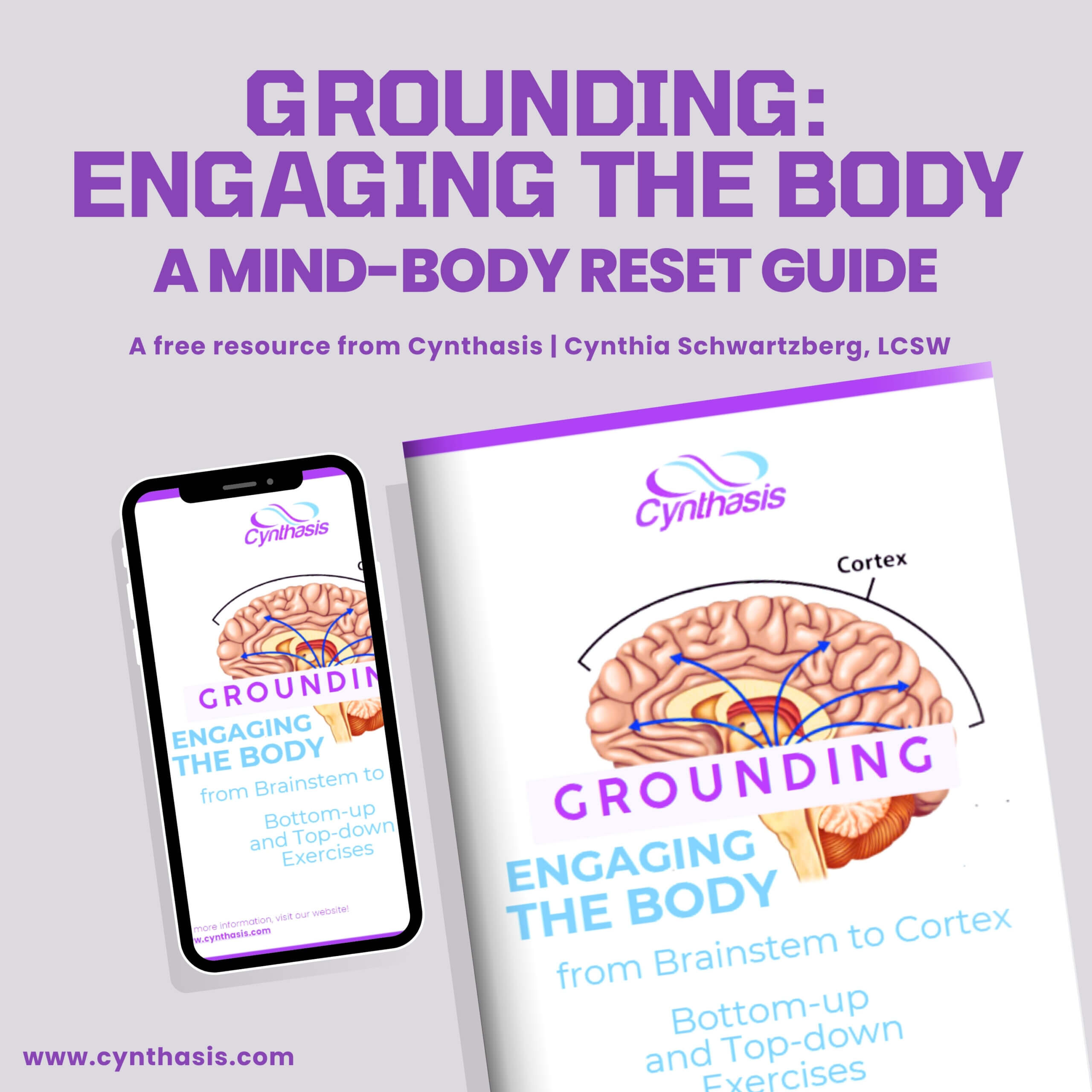I began working in the body/mind field close to 40 years ago with little information on Grounding. Today we will unravel some new discoveries and how Brainspotting is a grounding process.
Our feet, hands, eyes, and skin are key points for feeling grounded. When we’re un-grounded, we tend to be less aware of these points in relation to our environment. We can feel floaty, awkward, disconnected, out of sorts, or absent-minded. When we’re un-grounded, we may slip more into fantasy regarding ourselves, our lives, our past associations, and the people around us. We tend to overthink and lose touch with our feelings. Our sense of self and our relationships is different when we’re centered. The difference is profound.
I taught grounding classes many years ago to help people reconnect to their bodies and release body armoring. These classes were before much research on the subject was available. One day the class said, why not make a tape recording, I would love to do this at home. I did this with the help of the members who had a  tape mixer and a friend created some flute music. Years passed, technology changed and still little documented information except members then said why not turn this into a CD, so I did. As time went on, I discovered CD’s were out and streaming is in. The original class is now available here. Science is also in with more studies and instruments to measure grounding.
tape mixer and a friend created some flute music. Years passed, technology changed and still little documented information except members then said why not turn this into a CD, so I did. As time went on, I discovered CD’s were out and streaming is in. The original class is now available here. Science is also in with more studies and instruments to measure grounding.
I love when science catches up to what humankind has known since the beginning of time. Today I am getting ready for the Self-Spotting workshop and digging into what science is saying. Studies are using the words grounding or earthing and discovering it is effective in enhancing our moods, regulating our heart rate, reducing inflammation, improving sleep, and more.

Clinton Ober, published in January 2000, an article, Grounding the Human Body to Neuralize Bioelectrical Stress From Static Electricity and EMFs. He points out the impact of modern life on the human body. Our modern shoes, living dwellings, schedules, and lack of sunlight have led to a loss of natural grounding. The results are that our bodies accumulate static electricity and radiated electric fields leading to muscular tension, pain, and poor sleep quality, all indicative of nervous system overstimulation. Others have discovered, “Being physically near plants is so impactful to our mental and physical health that it turns out, even just seeing a plant can significantly impact our recovery from stressful health events.” And, electrical activity from the earth makes a measurable synchronization to our brains for enhanced functioning.
Let’s get back to earth:
- Hug/touch a tree
- Touch some grass
- Walk barefoot
- Sleep on a material that is of the earth
- Have plants around
- Take a few deep breaths while sitting on the ground.
- Greet the day with a few moments outside
- Stressed at the office, step outside on the sidewalk and reset
- Spend a few moments outside before you go to sleep and gaze at the sky.
 Visualization and mindfulness are extremely helpful when you can’t get directly to the earth. There are periods in our life when we can’t do it alone. That is when body/mind therapy models are helpful. One such modality is Brainspotting
Visualization and mindfulness are extremely helpful when you can’t get directly to the earth. There are periods in our life when we can’t do it alone. That is when body/mind therapy models are helpful. One such modality is Brainspotting
Why Brainspotting and grounding? Brainspotting is a modality working with the whole person in the here and now. The process supports the client’s body to heal itself. The therapist is trained to not intervene, impose their thoughts, or suggest ways to help the client. The visualization/imagery comes from the client’s deep neurobiological process. It is a client-led process. This helps the client return to their inner wisdom and rhythm. The client will come sharing what is impacting them and with the help of the therapist get support to unravel unconscious stuck material resulting in living more grounded..
The Brainspotting process focuses on four key aspects to help integration, connection and grounding — body, brain, focused mindfulness, and the therapeutic relationship. In The Power of Brainspotting, Chapter on Brainspotting and Grounding I review the components of the Brainspotting set-up and theory to explain the power it has for grounding clients. 
All Brainspotting components support the client’s shift from dysregulation to regulation in a contained attuned environment for the innate wisdom of the client’s body to heal itself. Brainspotting helps clients locate, focus, and release unprocessed material that is contributing to their dysregulation. When an individual has long-standing chronic stress or has experienced trauma, their body is flooded with excess charge. Their cortisol and adrenalin increase. The flooding sensation has not released or discharged, and the person is in an ungrounded state. Brainspotting helps this energy shift. The shift happens deep within the brain/body connection for long-lasting results. The Brainspotting model works with whatever the client comes to session that is of concern to the client. Together the client and therapist define the activation of the client, find a body sensation connected to it, and the therapist helps guide the client into a focused mindfulness state of observing with curiosity for their brain/body to release, reorganize and discover whatever arises in the moment.

The focused mindfulness part of the session grounds the client with a fixed eye position. Having the eyes focused in one spot is extremely grounding. As stated before the eyes are one of our main points to ground and connect. 80% of all sensory impressions are from our eyes. They are the window to our soul to look inward as well as outward and to be seen. Having a fixed eye position calms the nervous system. Tibetan Buddism and Zen Buddhists actually keep their eyes open when meditating to foster calming the mind. This mindful meditation practice in yoga is called Trataka. The meditator focuses on the flame of a candle or a single object. Research found still eyes lead to a calm mind. It also. Helps to improve the ability to stay present.
In addition, when the eyes are focused on a small area or an object vs scanning a large environment, the shift between focal and peripheral viewing can contribute to the calming of the mind.
Other aspects of the Brainspotting are also grounding. The relationship is key for healing change to take place and how the Brainspotting therapist sits attuned to the client is different. The therapist’s attuned, mindful, presence waiting for the client important for the client’s system to experience. Think about how anchoring it can be when you are around a very grounding attuned person receiving you.
If you can’t get to a therapist and need to anchor on the ground without access to Earth, here are a few tips.
- Pause. Take a moment to look at a picture of nature. Breathe into the moment as you look
- Imagine yourself someplace supportive and soothing.
- Imagine your feet like the roots of a tree anchoring you and letting all the tension fall away into the earth. Receive the light from above and the anchor from below.
- And, eating the food of life for the body is another great grounding tool.







